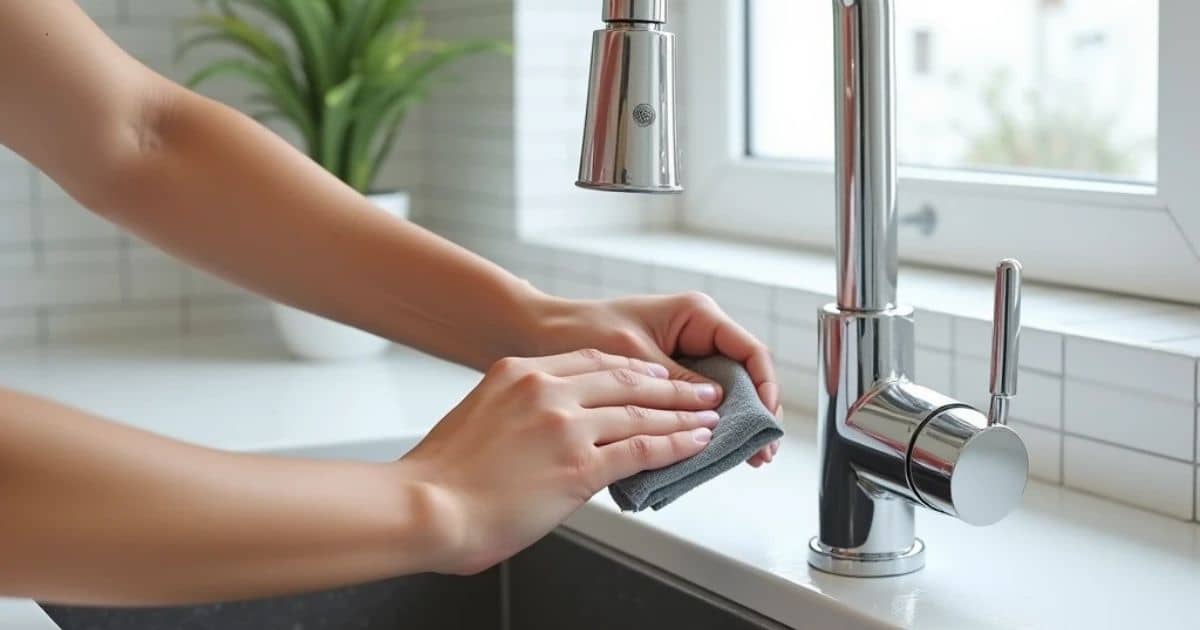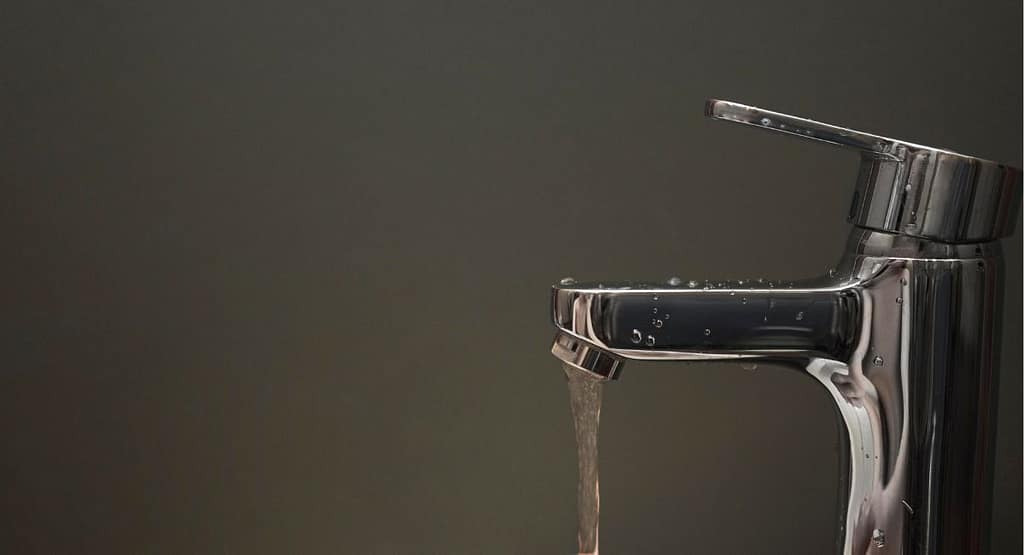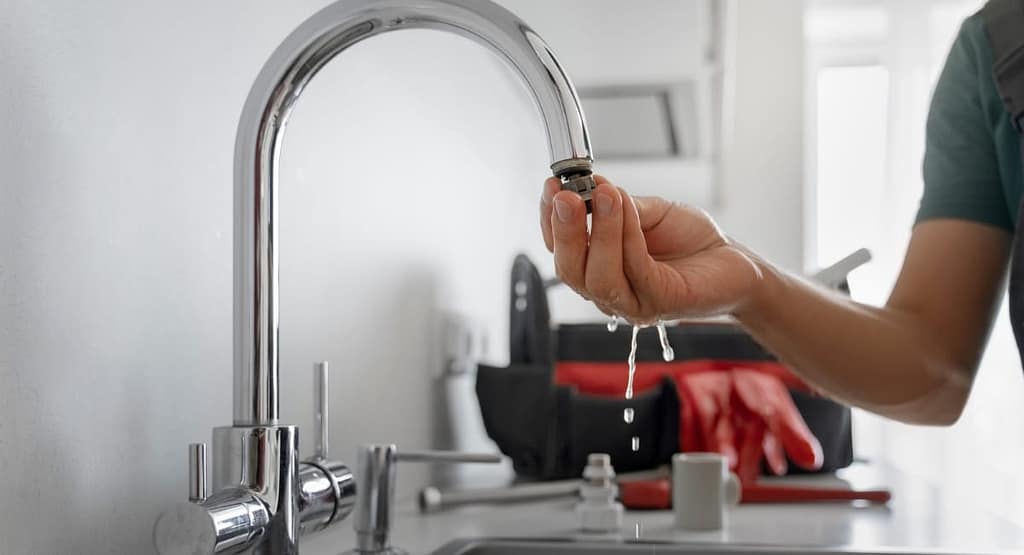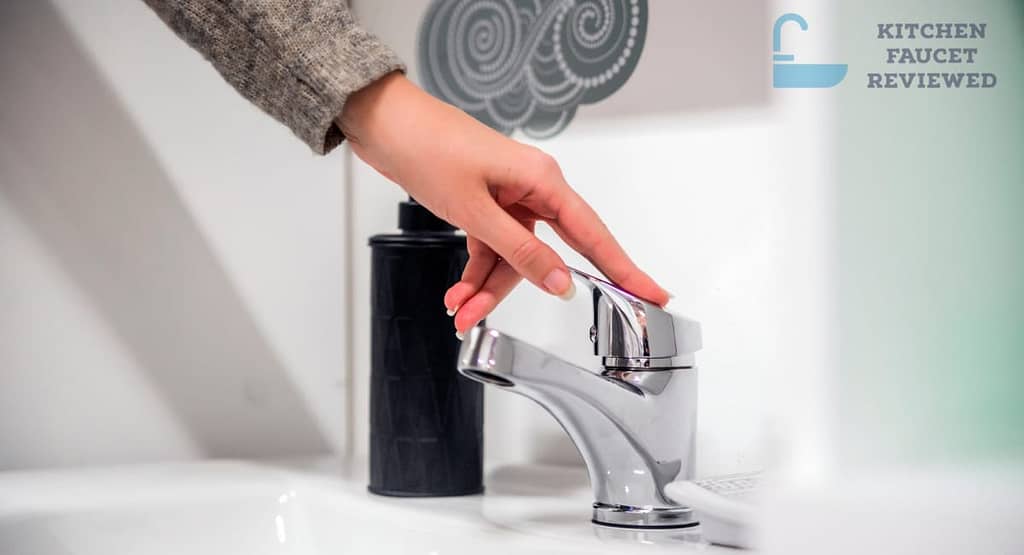Chrome kitchen faucets are popular for their sleek and modern appearance, but they can quickly lose their luster when plagued by hard water stains. These stubborn mineral deposits not only detract from the faucet’s aesthetic appeal but can also affect its functionality over time.
Fortunately, with a few simple techniques and household ingredients, you can easily restore your chrome kitchen faucet to its former glory. In this article, we will explore effective methods to remove hard water stains and keep your faucet shining bright.
How to remove hard water stains on chrome kitchen faucets?
Vinegar Solution
Vinegar is indeed a versatile and natural cleaning agent that can effectively remove hard water stains. Here’s the well-researched knowledge about using vinegar solution to tackle stains on your chrome kitchen faucet:
1. The science behind vinegar’s cleaning properties: Vinegar contains acetic acid, which acts as a mild acid cleaner. When mixed with water, vinegar can break down and dissolve mineral deposits, such as calcium and magnesium, commonly found in hard water stains.
2. Mixing the solution: To prepare the vinegar solution, mix equal parts of white vinegar and water. This ratio ensures an effective yet safe concentration of acetic acid. You can use a bowl or a spray bottle to hold the solution, depending on your preference and the size of the affected areas.
3. Applying the solution: Dip a soft cloth or sponge into the vinegar solution, ensuring it is saturated. Gently rub the cloth or sponge onto the stains on your chrome kitchen faucet. The acetic acid in the vinegar will start to dissolve the mineral deposits.
4. Handling intricate details and hard-to-reach areas: For faucets with intricate details or areas that are difficult to reach, an old toothbrush can be used. Dip the toothbrush into the vinegar solution and carefully scrub the stains, making sure to reach all the nooks and crannies.
5. Allowing the solution to sit: After applying the vinegar solution, it is recommended to let it sit on the stains for about 15-30 minutes. This allows the acetic acid to penetrate and break down the mineral deposits effectively.
6. Rinsing and drying: Once the vinegar solution has had sufficient time to work, rinse the faucet thoroughly with clean water. This step is crucial to remove any residue and prevent water spots from forming. Finally, use a soft cloth to dry the faucet, ensuring a clean and shiny finish.
It’s worth noting that while vinegar is generally safe to use on chrome fixtures, it is always a good idea to spot test a small, inconspicuous area first to ensure compatibility and avoid any potential damage. Additionally, vinegar may have a strong odor, but it will dissipate quickly once the faucet is rinsed and dried.
2. Lemon Juice Power
Lemon juice is a natural and effective solution for dissolving hard water stains on chrome faucets. This is due to the citric acid present in lemon juice, which helps break down and remove mineral deposits. Here are the steps to utilize lemon juice for stain removal:
a. Squeeze fresh lemon juice: Start by extracting the juice from a lemon. You can do this by either squeezing it by hand or using a juicer. To ensure a smooth application, strain the juice to remove any pulp or seeds.
b. Apply the lemon juice: Dip a cloth or sponge into the freshly squeezed lemon juice. Gently rub the cloth or sponge onto the stained areas of the chrome faucet. Alternatively, you can cut a lemon in half and use it directly on the stains, squeezing the juice out as you go.
c. Let it work its magic: Allow the lemon juice to sit on the stains for approximately 10-15 minutes. During this time, the natural acids in the lemon juice will break down the mineral deposits, making them easier to remove.
d. Rinse and dry: After the lemon juice has had time to work, thoroughly rinse the faucet with clean water. This will help remove the lemon juice and any residue left behind. Finally, dry the faucet using a soft cloth to prevent water spots and achieve a brilliant shine.
3. Baking Soda Scrub
Baking soda is a mild abrasive that can effectively remove hard water stains from chrome surfaces without causing scratches. Here’s how you can create and use a baking soda scrub:
a. Create a paste: Start by mixing baking soda with a small amount of water to form a thick paste. The consistency should be similar to toothpaste, allowing for easy application.
b. Apply the paste: Using a soft cloth or sponge, apply the baking soda paste to the stained areas of the chrome faucet. Gently rub the paste onto the stains, focusing on the most heavily affected spots. The mild abrasive properties of baking soda will help lift and remove the mineral deposits.
c. Let it sit: Allow the baking soda paste to sit on the stains for 5-10 minutes. This will give the paste enough time to penetrate the mineral deposits and loosen them, making them easier to scrub away.
d. Scrub and rinse: Using a soft-bristled toothbrush, gently scrub the stains in a circular motion. The combination of the baking soda paste and scrubbing action will help dislodge and remove the hard water stains. Rinse the faucet thoroughly with water to remove any residue, and then wipe it dry with a soft cloth.
3. Prevention is Key
Proper preventive measures can help maintain the shine of a chrome kitchen faucet and minimize the occurrence of hard water stains. Here are some well-researched tips to follow:
1. Wipe the faucet regularly: After each use, it’s important to wipe down the faucet with a soft cloth or towel. This simple step helps remove water droplets, preventing them from evaporating and leaving behind mineral deposits that can cause stains. Regular wiping also helps maintain the overall cleanliness and appearance of the faucet.
2. Invest in a water softener: If your area has hard water, which contains high levels of minerals like calcium and magnesium, installing a water softener can be beneficial. A water softener works by removing or reducing these minerals from the water supply. This helps prevent the formation of mineral deposits and significantly reduces the chances of hard water stains on your faucets.
3. Use a microfiber cloth for cleaning: When it comes to cleaning your chrome faucet, it’s essential to choose the right tools. Instead of abrasive sponges or brushes, opt for a microfiber cloth. Microfiber is a soft and gentle material that won’t scratch the chrome surface. It effectively captures and removes dirt, grime, and mineral residue without causing any damage to the faucet’s finish.
4. Avoid harsh chemicals: While it may be tempting to use strong chemical cleaners to tackle tough stains, it’s important to avoid using them on your chrome faucet. Harsh chemicals can corrode the chrome finish and cause permanent damage.
5. Dry the faucet after cleaning: After cleaning your chrome faucet, ensure that you dry it thoroughly with a clean cloth. This step helps prevent any residual moisture from sitting on the surface, which can lead to the formation of water spots or stains over time.
Conclusion
Hard water stains on chrome kitchen faucets can be frustrating, but with the right cleaning methods, you can restore their original luster and keep them looking pristine. Whether you choose to use vinegar, lemon juice, baking soda, or a combination of these methods, remember to be gentle and rinse thoroughly to maintain the faucet’s finish. By implementing preventive measures and regular maintenance, you can enjoy a sparkling faucet that adds a touch of elegance to your kitchen for years to come.
How to remove hard water stains on Gold kitchen faucets?
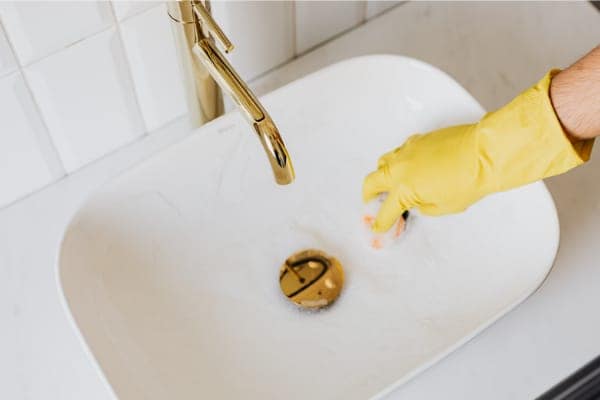
Gold kitchen faucets can add a touch of elegance and sophistication to any kitchen decor. However, dealing with hard water stains on these faucets can be a frustrating and challenging task. Hard water contains a high mineral content, including calcium and magnesium, which can leave unsightly stains on the gold surface.
Fortunately, there are several effective methods you can employ to remove hard water stains from your gold kitchen faucets and restore their pristine appearance.
Here are some unique and additional points about removing hard water stains from gold kitchen faucets:
- Toothpaste: Toothpaste can be used as a gentle abrasive to remove hard water stains from gold faucets. Apply a small amount of toothpaste to a soft cloth or sponge and rub it onto the stained areas. Use gentle circular motions to scrub the stains. Rinse the faucet thoroughly with water and dry it with a clean cloth.
- White Vinegar Soak: For stubborn hard water stains, you can create a white vinegar soak. Fill a small container or plastic bag with white vinegar and submerge the affected parts of the gold faucet in the vinegar. Let it soak for a while after soaking, remove the faucet from the vinegar, rinse it with water, and dry it with a clean cloth.
- Soft Toothbrush: When scrubbing hard water stains, use a soft-bristled toothbrush or a brush specifically designed for delicate surfaces. Avoid using abrasive brushes or scouring pads, as they can scratch the gold finish of the faucet.
- Distilled Water: If your tap water is particularly hard, consider using distilled water for cleaning your gold faucet. Distilled water has a low mineral content, which reduces the chances of new stains forming on the faucet after cleaning.
- Polishing: After removing hard water stains, you can further enhance the appearance of your gold faucet by polishing it. Use a gold-specific polish or a non-abrasive metal polish to gently buff the faucet, following the manufacturer’s instructions. Polishing helps restore the shine and luster of the gold finish.
- Professional Cleaning: If you are unsure about cleaning your gold kitchen faucet yourself or if the stains are too severe, it may be best to consult a professional cleaner who specializes in handling delicate surfaces. They will have the expertise and appropriate cleaning products to effectively remove hard water stains from your faucet without causing damage.
Also check our top rated gold bathroom faucets with affordable price.

